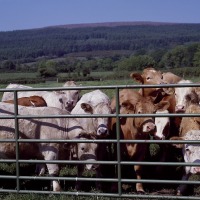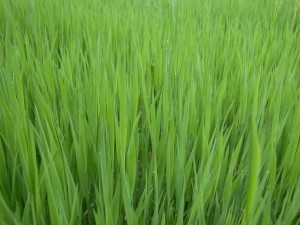

3 Surprising Things Cows are Fed That You Didn’t Know
 Posted by SLN Staff on Aug 12th, 2015 | Comments Off on 3 Surprising Things Cows are Fed That You Didn’t Know
Posted by SLN Staff on Aug 12th, 2015 | Comments Off on 3 Surprising Things Cows are Fed That You Didn’t Know 

You might be surprised to find out what cows are being fed at the feedlots. In addition to the old soy and corn, animals are being fed garbage like saw dust, candy wrappers, and fish guts.
Suppose you bought a pound of meat from the supermarket. It is more than likely that your beef came from a feedlot raised cow. Do you know what was fed to the animal before it was turned into packaged beef? You would be surprised to find out what cows are being fed in some of the feedlots.
Ruminants grow their best on pasture grasses. But most of the industrial beef you buy at the supermarket comes from a feedlot, and there are a number of feedlots that feed unnatural food to the beef cattle. You have no way of telling what your animals ate, and you cannot always recognize them either, even if you read the labels on the packages.
You can assume that most of the beef in your supermarket contains hormone residues. You can’t see it. And you can’t always recognize it by reading the label. – Mother Earth News
3 surprising things fed to the cows
“There’s a lot of stuff which the general public might not think of as feeds which are actually quite common,” says Cory Parsons, a livestock nutrition expert at Oregon State. Below are some of the examples.
1. Candy wrappers
Some of the feedlots and even ranchers reported feeding their cows, steers and beef cattle sugary candy and candy wrappers, such as marshmallows, gummy worms, hard candy, chocolate, hot chocolate mix, sprinkles, and so on. The extra sugar in candy gives cows extra energy that they would get from corn and get fatter. This practice became even more popular as the corn prices increased.
The shocking thing is, some of the candy suppliers started selling imperfect, broken or expired candy to the farmers. In some cases, the candy was fed that came with the wrappers.
2. Fish and poultry byproducts
Cows were also found being fed the byproducts from another agricultural system. For example, farmers or feedlots that were near the coast or had a fish farm or poultry farm nearby, were often feeding guts and other unusable parts of fish, crabs, shrimp, and craw-fish to the cows. These are cheap sources of protein that can be found in large amounts from fish farms and in the wild. These fish byproducts are ground and mixed with their feed.
3. Sawdust
Bob Batey, an eastern Iowa entrepreneur, decided to turn sawdust into commercial cattle feed after he observed cows gobbling up sawdust from his paper mill. Sawdust has cellulose in it, which is a carbohydrate, but it’s bound by a compound called lignin, which makes it hard for cattle to digest. Bob found a way to separate lignin from sawdust, by soaking it in nitric acid. He teamed with a commercial feed producer in Iowa and came up with a cattle feed mix containing sawdust, corn, vitamins, and minerals. Iowa State University, said with corn prices high, the stuff could catch on “pretty fast.” The Iowa City Gazette noted that in tests, the cows ate the stuff “like candy.”
 What we eat should be healthy and also tasty for us, and our animals should eat healthy too. It has been found through studies and public opinion that typical grass-fed beef is tastier, leaner, more healthy, and “beefier” than typical commercial feedlot beef.
What we eat should be healthy and also tasty for us, and our animals should eat healthy too. It has been found through studies and public opinion that typical grass-fed beef is tastier, leaner, more healthy, and “beefier” than typical commercial feedlot beef.
P.S: – You could grow luscious micro-green grasses with our micro-green fodder system. Have you tried our DIY systems? Now is the best time to grow your own micro-green fodder. Click here to get DIY plans for proven livestock feeding systems.
To learn how you can setup a DIY system please contact us at 303-495-3705 or Click here to book a meeting with us. You can also get your Feed in A Box Microgreens (fodder) from us, you will absolutely love it!!
Please leave your questions or comments in the comment box below or visit our Facebook Page and leave your comment there. We’d really appreciate it.
Source: Sustainable Livestock Nutrition
Related articles and resources:
- Top 5 Reasons to Eat Grass-Fed Meat | Sustainable Livestock Nutrition
- 5 Ways to Cut your Cattle Feed Cost | Sustainable Livestock Nutrition
- Do You Know What You Eat Ate? | Sustainable Livestock Nutrition
- Grazing Techniques that Reduce Feeding Costs | Sustainable Livestock Nutrition
- What You Need to Know About The Beef Industry – Homesteading and Livestock – MOTHER EARTH NEWS
- Southeast Iowa cattle herd thriving on sawdust-based feed | TheGazette
- The Differences Between Grass-Fed Beef and Grain-Fed Beef | Mark’s Daily Apple





